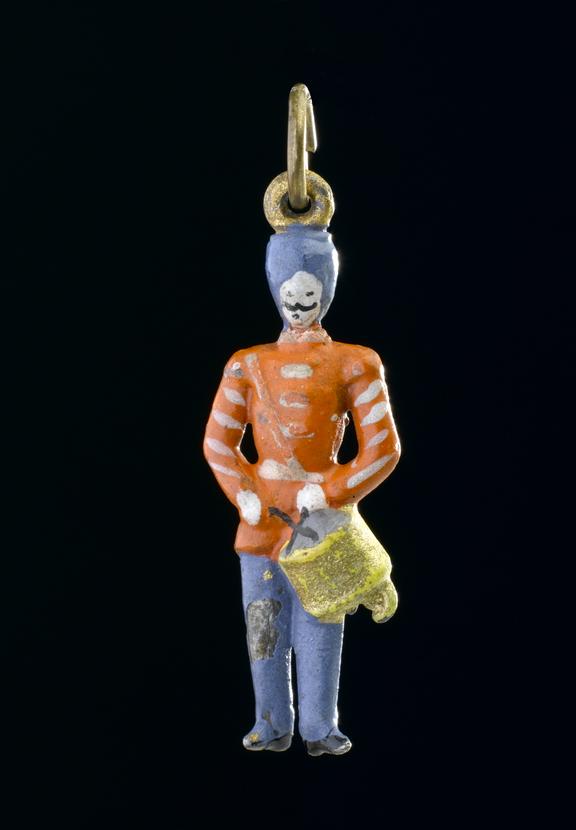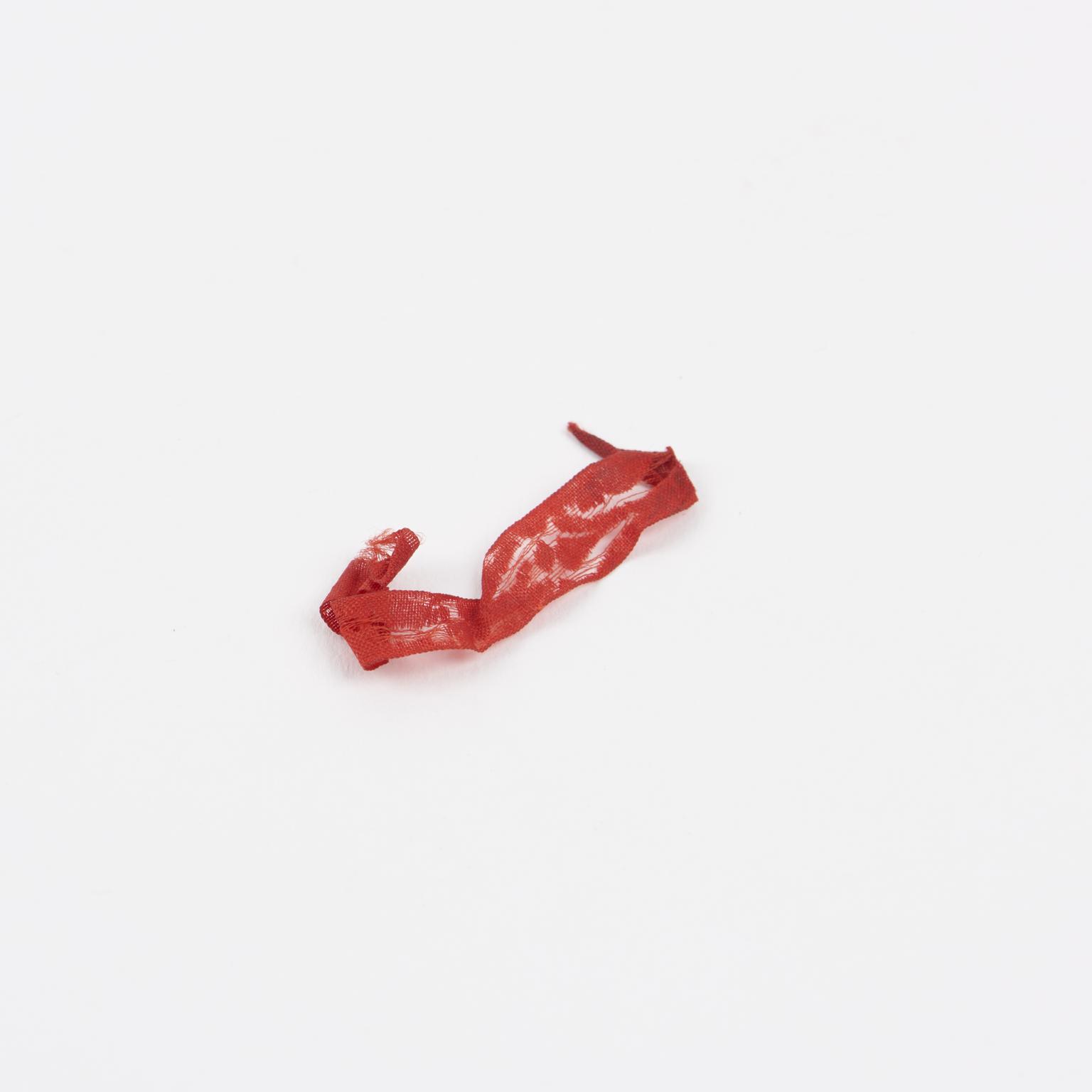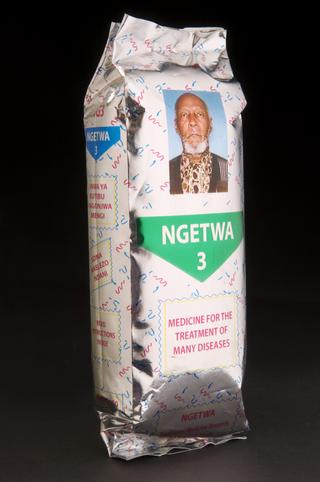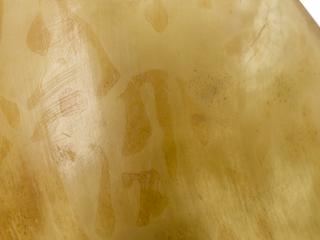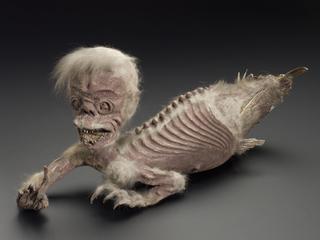Metal amulet in the shape of a soldier
Metal amulet in the form of a military bandsman, with loop attachment for a ribbon, worn by a soldier of the Middlesex Regiment during the First World War, 1914-1918.
More
The carrying of ‘lucky charms’ – as protective amulets against ill health and physical danger – is common in many cultures around the world. Luck played a major role in combatant’s fate during the First World War, 1914-1918. As such, soldiers of all nations put great faith in lucky charms and amulets. Whether given by family and loved ones, bought commercially or chosen for personal significance, these special forms of protection were carried into battle. This metal amulet in the form of a military bandsman was worn by a soldier of the Middlesex Regiment.
